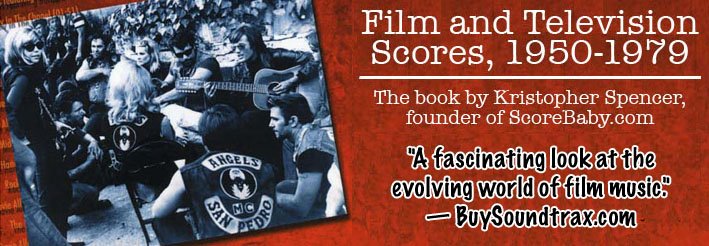Highly accessible genre-based examination of movie music, February 9, 2009
By
Randall Larson (BuySoundtrax.com)
Kristopher Spencer's Film and Television Scores, 1950-1979: A Critical Survey by Genre, takes an unusual but highly accessible approach in its examination of music for movies. Noting the significant change that transformed Hollywood film scores as the Golden Age waned and the advent of pop, jazz, rock, avant-garde, and other styles began to be assimilated into film scores, Spencer, the founder of [...], illuminates the "Silver Age" of movie music in this winning and very readable volume. The composers of this era of film music history "changed the way movie music was made," asserts Spencer, who examines in depth the changing role of music in seven genres of moviemaking: crime thrillers, spy movies, sexploitation films (think Lolita, Barbarella, Vampiros Lesbos, Last Tango in Paris), Westerns, science fiction, horror films, and rock and roll movies. While the latter might be obvious in its use of music, Spencer explores the changing role of rock music as a song soundtrack to such films as The Endless Summer, The Wild Angels, The Trip, Easy Rider, The Graduate, Saturday Night Fever, and many others, and shows how the beat-and-rhythm heavy music had its own place aside more dramatic and progressive orchestral film scores. Each chapter includes a dozen recommended soundtracks for your buying or bidding pleasure, and the result is a fascinating look at the evolving world of film music as it pertained to specific genres of film music during its Silver Age. Spencer's evaluation of horror film music, for example, is a concise overview of the use of music in films of Roger Corman, Hitchcock, Hammer, and others, including a prolonged and very fascinating overview of music in Italian giallo horror films of the 70s. Spencer's long chapter on Western scores proffers up an excellent summation of the music for Italian and German Western films and the groundbreaking effect of Italian Western music on so much of cinema. The chapter on science fiction scores evaluates the progression from 60's pop, atonal sci-fi music, and the resurgence of symphonic film music in the later 1970s. There's not an extensive musical analysis of individual films or composers, but there is a perceptive overview of the kind of music that embellished these movies and how that kind developed and changed over the three decades covered by this book. In all of this Spencer calls out attention to significant nuances in the development and style of genre film scoring and illuminates much of the music for these types of films, and their musical relationship together as members of the same genre (or sub-genre, or sub-sub-genre, in some cases), that is valuable to any serious study of movie music.
 “Stelvio Cipriani’s sensuous and sinister score for The Iguana with the Tongue of Fire is typical of the Italian thriller genre. The theme musically describes the carefree existence and ultimate vulnerability of the story’s leading lady. Gentle guitar and keyboard figures sprinkle over swaying strings, swooning female vocalisms and a sexy Latin rhythm, suggesting sunny days of shopping on the plaza and nights of passionate love by a crackling fire. What she doesn’t know is that her life soon will become a nightmare of sinister strangers, drug-induced hallucinations, raging paranoia and knife-wielding maniacs."
“Stelvio Cipriani’s sensuous and sinister score for The Iguana with the Tongue of Fire is typical of the Italian thriller genre. The theme musically describes the carefree existence and ultimate vulnerability of the story’s leading lady. Gentle guitar and keyboard figures sprinkle over swaying strings, swooning female vocalisms and a sexy Latin rhythm, suggesting sunny days of shopping on the plaza and nights of passionate love by a crackling fire. What she doesn’t know is that her life soon will become a nightmare of sinister strangers, drug-induced hallucinations, raging paranoia and knife-wielding maniacs."
















